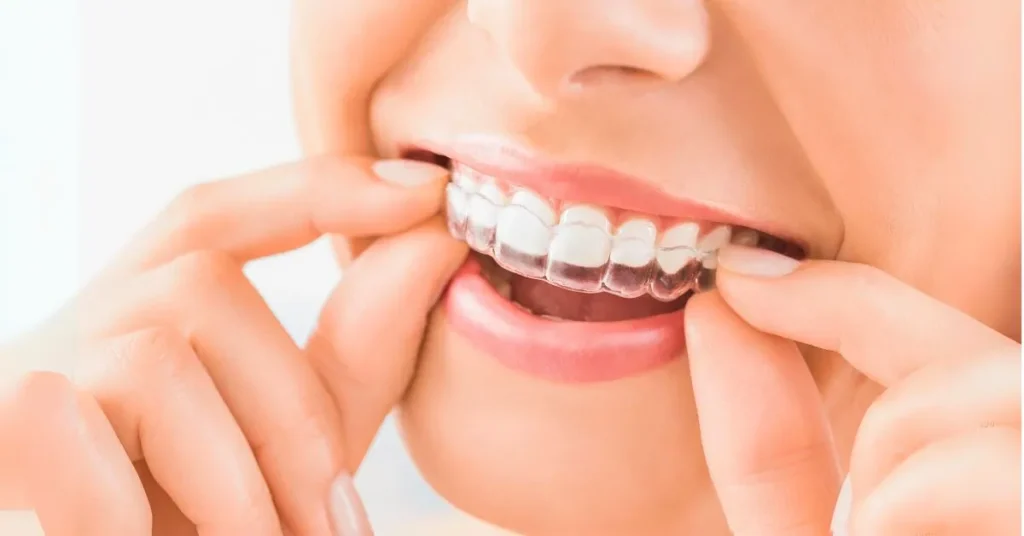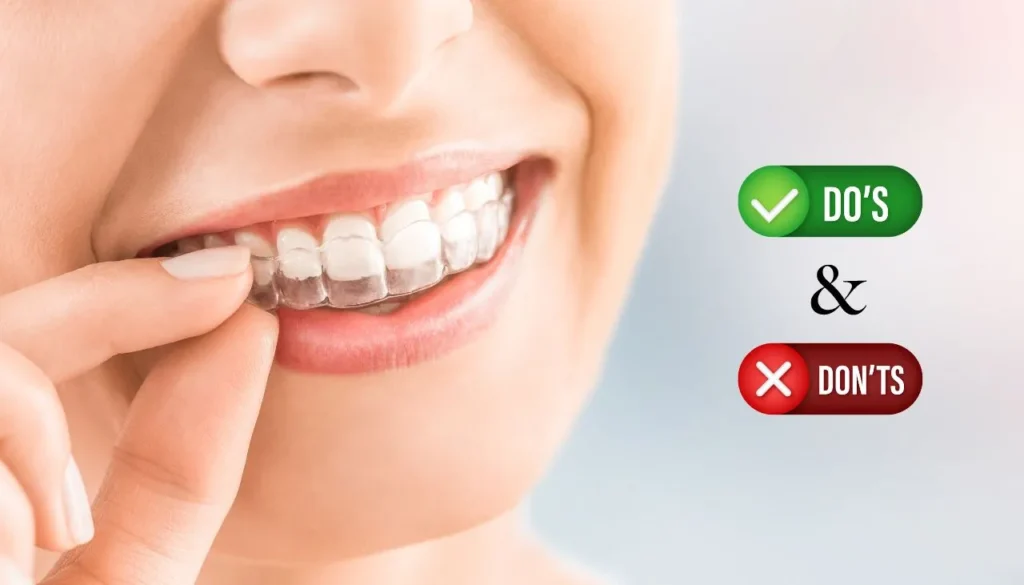A common teeth misalignment Crossbite, is a condition where it is difficult to maintain oral hygiene. Sometimes it’s painful and also leads to problems like chewing food or miss-pronunciation. Besides an aesthetic concern, it may indicate other health problems to the patient. In this article, you may have an insight into crossbites, as well as symptoms, causes and treatments.
What is Crossbite
Crossbite is a form of malocclusion where your upper teeth fit inside your lower teeth when you bite down. In a normal teeth alignment condition, the upper teeth will fit slightly over the lower teeth and, in a crossbite, the opposite occurs. In some cases, some upper teeth are positioned inside the lower teeth. However, crossbite is unique from one individual to another, and it can affect a single tooth or a group of teeth and jaw positioning.
Crossbite can be of two types, and they are:
Anterior:
Also known as an underbite, an anterior crossbite affects the front teeth. In this case, the lower front teeth are positioned to stick out past the upper front teeth. This is the most common type of crossbite.
Posterior:
Posterior crossbites affect the back teeth. In this type of crossbite, the upper back teeth will sit inside of the lower back teeth when you bite down.
Causes of Crossbite
The causes of crossbites are Genetic and External.
1. Genetic factors:
Genetic factors are when any parent of the patient passes the teeth misalignment trait or skeletal discrepancies. Such a person is normally born with such a condition, and while the concerns are sometimes minor, the difficulty increases with growing age.
2. External factors:
Several external factors can be responsible for a crossbite. Such as
- Thumb-sucking or pacifier use in childhood
- Tongue thrusting habit
- Premature loss of baby teeth or little space between baby teeth
- Teeth or jaw fracture or facial trauma resulting from accidents or injuries
- Improper swallowing patterns
- Mouth breathing
- Ill-fitting dental devices such as dental crowns, braces, retainers, etc.
- Tumors of the mouth or jaw
Symptoms of Crossbite
- Jaw pain or Facial Pain: Crossbite causes discomfort and pain in the jawline, which sometimes leads to headaches or even facial pain as a whole.
- Gum disease: This misalignment does not provide scope for properly brushing or flossing your teeth. This results in gum recession and tooth decay.
- Difficulty in chewing food: Due to this misalignment of teeth, patients experience difficulty in chewing food or taking a bite. This hampers their daily lifestyle and food habits, leading to poor digestion and poor health.
- Speech impairment: A major difficulty caused by this misalignment is improper speech or the development of lisps in some pronunciations.
- Grinding or clenching of the teeth: This is a common issue in this condition where your upper and lower teeth are not aligned.
Risk Factors of Untreated Crossbite
Accelerated tooth wear: Teeth misalignment can result in tooth friction and wear on enamel, weakening tooth structure and increasing the risk of tooth damage and loss.
Jaw joint (TMJ) disorders: The temporomandibular joint (TMD) is the most complex joint of the human body responsible for the movement of the jaw.
Crossbite affects this joint and, over time, may cause disorder of the joint.
Gum disease and tooth decay: Prolonged misalignment does not provide patients with the scope of maintaining proper oral health, leading to gum disease and tooth decay.
Facial muscle strain: Malocclusion like this can affect facial muscle strain or imbalance, leading to the appearance of facial features, including jaw or facial asymmetry.
Sleep apnea or breathing problems: Difficulty falling asleep or catching a deep sleep or sleep disturbances are also common symptoms of crossbite, and they are a potential risk factor for breathing problems during the night.
Other factors: Besides affecting your appearance, a crossbite can also affect your daily life, affecting your speech and eating habits. All these factors together may affect the self-confidence of the patient.
It is noteworthy that in some cases, people with such conditions do not experience any signs or symptoms. However, it is advisable that if you have crossbites, you check with an orthodontist as soon as possible to avoid future complications.
Diagnosis of Crossbite
1. Clinical examination:
During the consultation and examination session with the patient, the orthodontist will assess the alignment of the teeth and the connection between the upper and lower jaws. They will then examine the bite in both static and dynamic positions. This examination helps identify the actual condition.
2. Medical history:
Your orthodontist will inquire about your medical and dental history, including any factors, habits or conditions that might contribute to crossbite.
3. X-rays and imaging:
X-rays and images may be taken to provide a detailed view of the teeth and jaw structures. These will help the orthodontist evaluate the underlying bone structure and identify any issues not visible during the clinical examination.
4. Photographs:
Photographs of your face and smile from various angles may be taken to document the current condition and serve as a reference throughout treatment.
5. Dental impressions:
In some cases, dental impressions or digital scans of your teeth may be taken to create models of your bite. These models can help the orthodontist plan and visualize the necessary treatment.
Based on all this necessary information, your orthodontist will guide you with the best treatment option for your condition. The severity of the crossbite and other factors, such as your age and overall oral health, will influence the recommended treatment plan.
Treatment Options for Crossbite
Crossbites are typically corrected using orthodontic devices, such as traditional braces, clear aligners or surgical treatment methods. Treatment duration depends on the patient’s age and the severity of the crossbite.
If a crossbite is identified during childhood, treatment can begin before age 10. When the jaw is still developing during childhood, palate expanders can be used to widen the roof of your mouth and treat a crossbite. For other age groups, modern clear aligners are a smart and suitable treatment option to correct a crossbite. It can take anywhere from 18 months to 3 years to correct a crossbite.
Crossbites do not fix or straighten on their own, so early treatment is important to stop jaw and dental problems. Different methods, tools and techniques to treat crossbite as per individual conditions are given below;
Palatal expander:
A palatal expander is a device that is attached to your upper teeth and sits against the roof of your mouth. Your orthodontist will adjust it periodically to widen your palate and jaw slowly.
Braces:
These dental appliances put pressure on your bones and teeth to move your teeth into the correct position. You might need a palate expander and braces at the same time as your dentist’s recommendation.
Clear aligners:
These are removable transparent trays made of clear plastic that can be used in some cases of crossbite to fix misaligned teeth.
Dental equipment:
Dental equipment like bite plates and tongue cribs are used in treating crossbites.
Reverse pull headgear:
This is a device worn on the head to pull the upper jaw forward to fix a crossbite.
Myofunctional therapy:
Myofunctional therapy is beneficial in early cases of crossbites. In this approach, abnormal habits are corrected by using restrictive and preventive methods.
Other possible treatments:
- Tooth extraction (pulling teeth) to help with overcrowding.
- Capping, bonding, or reshaping teeth.
- Jaw surgery to reshape the jawbone, in severe cases.
Prevention and Management:
Early intervention and treatment: Timely diagnosis and treatment can help address crossbites effectively and improve oral health and overall well-being.
Checking improper oral habits: discontinuing habits like thumb sucking or using pacifiers, tongue-thrusting etc. in an early stage helps in this condition.
Maintaining oral hygiene and dental care: Golden rule of brushing, flossing and using mouthwash.
Retainers after treatment: After the active phase of treatment, retention is crucial to maintain the results. Retainers, which can be fixed or removable, help keep the teeth in their corrected positions.
Regular dental check-ups: Regular check-ups at your trusted dental clinics with your orthodontist will ensure your speedy recovery.
Addressing airway obstructions or breathing issues: Addressing breathing issues and airway obstruction at an early age is also helpful in preventing malocclusion.
How much does Corrective Treatment Cost for Crossbite?
The treatment plan for crossbite correction may vary depending on the severity of the condition and the specific needs of the patient. In India, the usual price range for Crossbite Teeth Correction generally varies from INR 35k-70k with an average cost of INR 50k.
Tips for Maintaining Good Oral Hygiene Habits
- Brush & floss your teeth: Maintain a habit of brushing and flossing twice a day regularly. Always try to floss and rinse after you eat to avoid food particles that can be left behind.
- Use mouthwash: After brushing, rinsing with mouthwash can kill any leftover bacteria and promote oral hygiene.
- Avoid Tobacco: Tobacco, among many other negative effects, is also known to dry out your mouth. This goes for all forms of tobacco, including cigarettes, hookah, chewing tobacco and so on.
- Drink plenty of water: Staying hydrated helps maintain a steady saliva flow and prevents bad breath. Also, water can help wash away leftover food particles from your teeth, keeping them fresh for long.
- Keep your regular dental appointments: You should continue to visit your orthodontist to ensure your smile is as healthy as possible.
Final Verdict
Crossbite issues are treatable with careful intervention from experienced orthodontic service providers. Besides an aesthetic condition, it also hampers the usual activities of the patient which may affect his or her self-confidence. An early treatment is the key to success for crossbite you should remember. Get expert orthodontic care to achieve the healthiest teeth possible so that you and your loved ones can lead a healthy, happy, and confident life.
FAQs
Not usually. A crossbite present in childhood doesn’t correct without any treatment, and untreated bite issues may get worse over time. This is why experts recommend beginning the treatment as early as possible.
It depends on the type of treatment. If the condition is treatable with braces or i3DLiner clear aligners, then this process is time-worthy and doesn’t involve any pain. If the condition requires surgery, then a little pain is expected.
Depending on the seriousness of the condition, several treatment options are available for correcting crossbite, such as orthodontic devices, surgery, therapies, etc. Besides traditional braces which have multiple disadvantages, clear aligners are a much more comfortable and convenient treatment option to treat crossbites among teens and young adults.
Early treatment is highly beneficial in crossbites. Whenever you notice the signs and symptoms, you should consult your nearest dentist without wasting time.
The treatment time typically depends on the treatment type prescribed by your orthodontist. Generally, 18 months to 3 years (complex cases) time is needed to treat crossbites.

